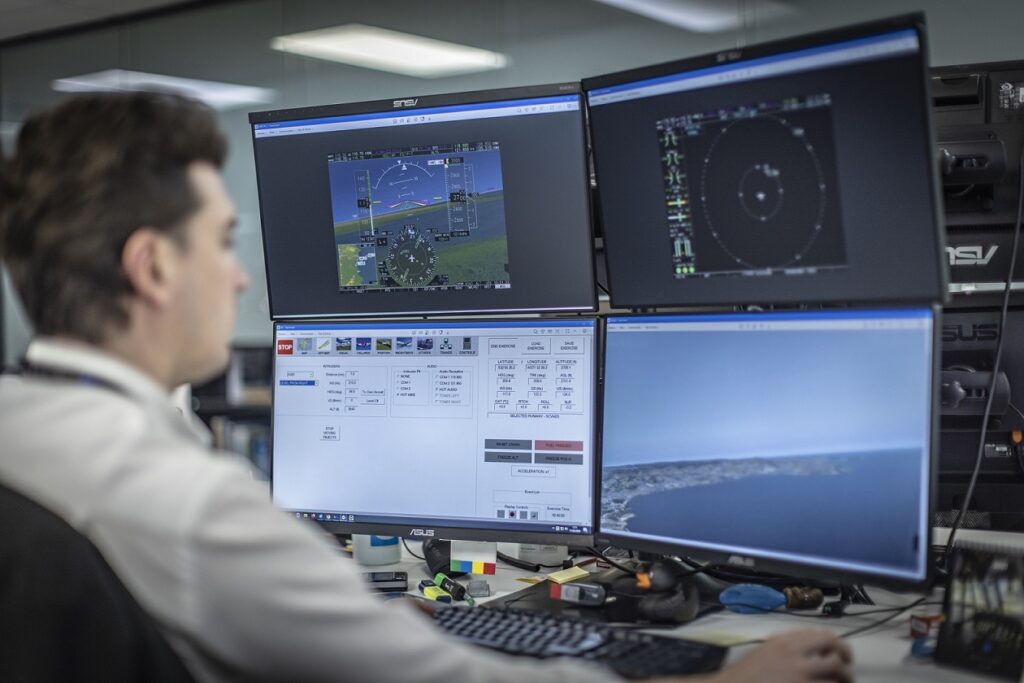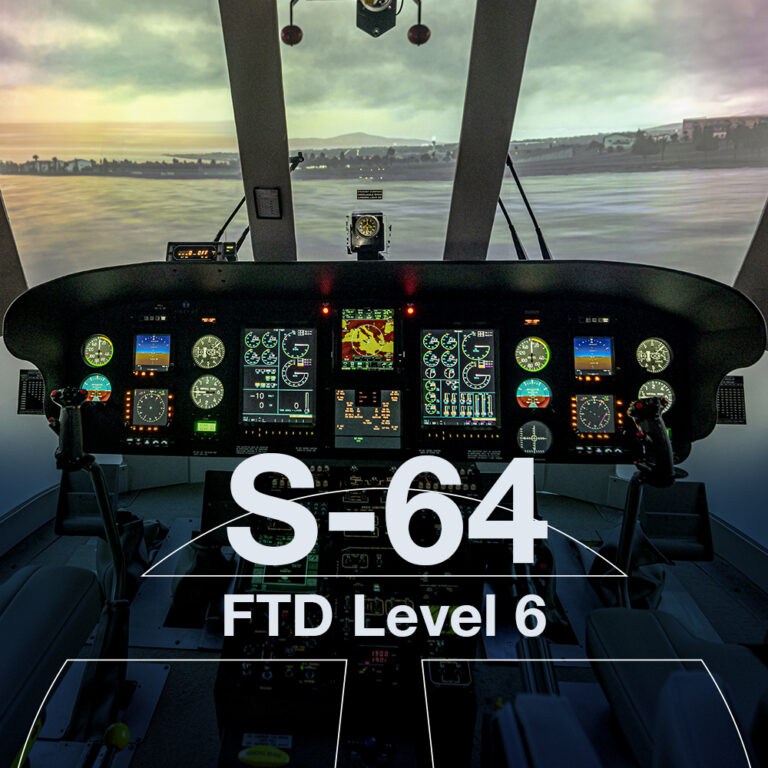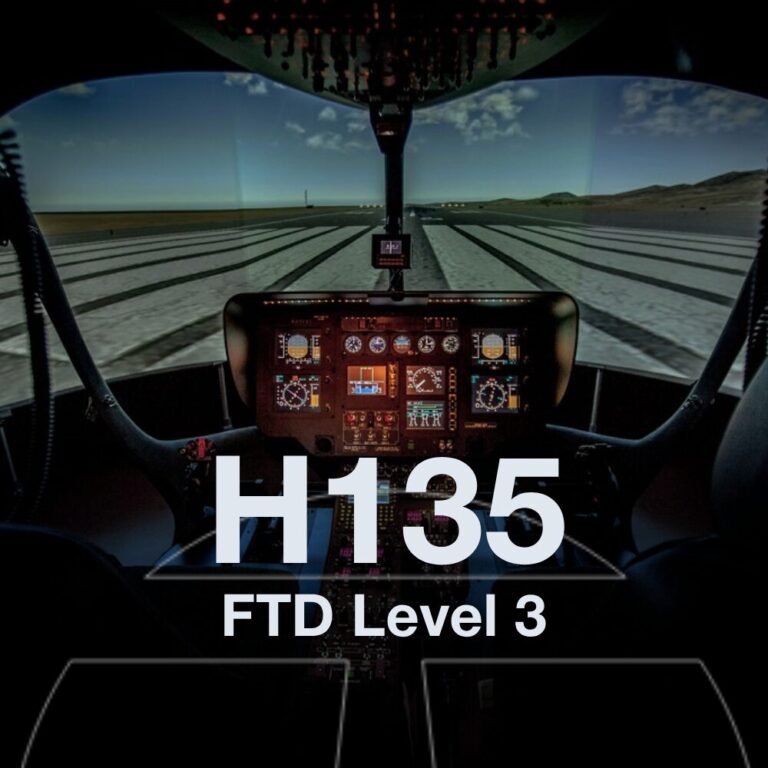Full Flight Simulators (FFS) have undergone a remarkable transformation since their inception, evolving from basic, mechanical systems to the sophisticated, high-tech training tools used by aviation professionals today. As the aviation industry has advanced, so too has the technology behind FFS, leading to safer, more efficient, and cost-effective training solutions for pilots around the world.
In this article, we will explore the key milestones in the evolution of full flight simulators, highlighting how these technological advancements have shaped the future of pilot training. From improved realism to enhanced safety features, we’ll delve into how FFS has become an indispensable asset for training centers, military aviation programs, and commercial aviation institutions.

The early days of full flight simulators: a revolutionary concept
The first full flight simulators emerged in the mid-20th century as a response to the need for more effective pilot training methods. Early flight simulators were relatively simple, often focusing on basic flight maneuvers and emergency procedures. They were mechanical and lacked the realism that modern pilots benefit from today.
At this time, flight simulators were primarily used to teach pilots the basic skills required to control an aircraft. These systems were far from perfect and often used rudimentary technology, such as motion platforms and simple visual displays. The main goal was to provide low-cost training alternatives to actual flight time.
1. Key Features of early FFS:
- Basic motion platforms for rudimentary flight sensations.
- Limited visual displays, often with a small field of view.
- Mechanical systems that mimicked flight controls.
While these early FFS helped pilots improve their skills, they were far from the sophisticated systems available today. Despite their simplicity, they were groundbreaking at the time, offering an innovative way to train pilots without the risks associated with real-world flying.
Technological advancements: from simple to high-fidelity simulators
As the aviation industry grew, so did the demand for more advanced Full Flight Simulators. The evolution of FFS technology was driven by the need for more realistic training environments, capable of simulating complex flight scenarios and providing detailed feedback to pilots.
1. Advancements in motion technology
By the late 20th century, FFS manufacturers began incorporating more advanced motion platforms that provided a greater sense of realism. Instead of relying on mechanical systems, modern FFS used hydraulic and electric actuators to simulate the movements and vibrations experienced during flight.
These advances made the simulation experience much more immersive, allowing pilots to feel the aircraft’s behavior during takeoff, turbulence, and landings, which was crucial for developing muscle memory.
2. Visual systems: realism in the cockpit
Another major leap forward was the improvement in visual systems. Early FFS systems used simple displays or projectors to simulate the environment outside the cockpit. However, the introduction of high-definition visual displays, combined with motion systems, provided pilots with a more realistic view of the flight path, air traffic, and weather conditions.
Modern FFS are equipped with large, high-definition screens and 3D mapping technology, enabling pilots to train in a wide range of weather conditions, environments, and emergency situations.
3. Real-time feedback and data logging
Today, FFS are integrated with advanced data logging and analysis systems that track every aspect of a pilot’s performance. These systems provide real-time feedback on flight techniques, allowing instructors to assess a pilot’s abilities and address weaknesses in a controlled and efficient manner.

How Full Flight Simulators (FFS) have involved and their current role in modern flight training
The Full Flight Simulators (FFS) have played an important role in the aviation industry, especially in replicating realistic flight scenarios, from adverse weather conditions to emergency landings. However, despite their historical significance, the continued advancement of FFS technology has slowed in recent years. This has led to the emergence of alternatives like Flight Training Devices (FTD), which are gaining ground due to their cost-efficiency and technological proximity to FFS.
The choice between FFS and FTDs often depends on the specific needs and objectives of the training organization. For many institutions, FFS remain essential for high-fidelity training, but others are turning to FTDs for cost-effective, high-quality simulations. Here are some of the key benefits:
1. Improved safety
One of the most significant advantages of flight simulators in general, including FFS, FTDs, and FNPTs, is the ability to conduct training in a safe, controlled environment. Pilots can experience dangerous situations, such as engine failures or extreme weather conditions, without putting themselves or others at risk. This capability allows for effective training in emergency procedures and critical situations without the real-world consequences. Whether using FFS, FTDs, or FNPTs, simulators provide a secure environment where pilots can practice and refine their skills, ensuring they are prepared for unexpected challenges during actual flights.
2. Cost efficiency
Although FFS are not as cost-efficient as FTDs, they still represent a worthwhile investment for training centers that require high-fidelity simulators, as they allow for a significant amount of simulation hours at a considerably lower cost than real flight hours.
3. Enhanced learning outcomes
With the continuous advancements in FFS technology, pilots can now experience more realistic and varied training scenarios. This enhances their ability to respond to unexpected situations in real life, ensuring they are well-prepared for any challenges they may face during a flight.
With this structured approach, training centers can significantly reduce reactive maintenance costs and increase their self-reliance in managing their efficient flight simulators.
The evolution of Full Flight Simulators from their humble beginnings to cutting-edge technologies has significantly impacted the way pilots are trained. As the aviation industry continues to embrace new technologies, FFS will only become more advanced, making training even more efficient and effective.
Entrol continues to be at the forefront of FFS development, offering advanced simulators designed to meet the evolving needs of the aviation industry. To learn more about full flight simulators and how they can enhance your training programs, visit our full flight simulators section to explore our advanced solutions.



